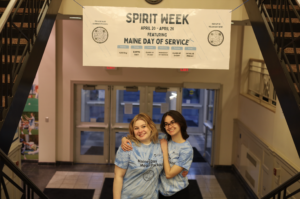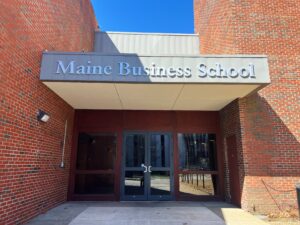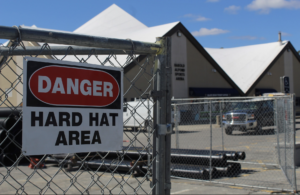NASA has selected 18 small research satellites from 11 states, including Maine, to fly as auxiliary payloads aboard rockets launching in 2021, 2022 and 2023. The mission undertaken by the University of Maine, MESAT-1, includes the payloads ALBEDO, IMAGER and HAB, proposed by Saco Middle School, Fryeburg Academy and Falmouth High School respectively. UMaine graduate students and University of Southern Maine (USM) undergraduate students will work collaboratively to provide payload design, development, integration and testing.
The MESAT-1 project was awarded $300,000 from NASA. The project also received $150,000 in NASA Maine Space Grant Consortium funding for graduate student research. Additional funding from UMaine and USM to support undergraduate student research will provide a total of $522,000 in funding over three years.
“NASA’s CubeSat Launch Initiative has a goal to have all 50 states participate by developing and launching nanosatellites,” said Terry Shehata, director of the Maine Space Grant Consortium.
The first payload, ALBEDO, will investigate the impact of albedo, which is the fraction of solar irradiation reflected back into space, on local temperatures. Albedo is affected by ground cover, such as dense forest or tundra, and has effects on both local and global climatic aspects. The goal is to compare temperature and albedo across urban and rural areas. The low Earth orbit space test environment offers the ability to collect and analyze vast quantities of relevant data. The purpose of the analysis is to determine whether or not urban heat islands can be mitigated through architectural designs that maximize albedo.
IMAGER, the second payload, will be used to study an application of a low-cost remote sensing tool for coastal estuaries as a science, technology, engineering and math (STEM) activity. The goal is to develop a remote sensing tool by modifying a digital camera to image shallow coastal waters and distinguish water quality properties such as foreign particle density and phytoplankton concentration.
The final payload, HAB, will study harmful algal blooms to see if they increase atmospheric temperature and water vapor levels in the atmosphere above them. Developing the capacity to monitor and identify algal blooms from orbit will provide a simple way to track the development, distribution and dispersion of blooms. If the payload can establish a correlation between humidity and the temperature of the atmosphere and the sea surface in its vicinity, it will be easier to detect when an algal bloom is growing.
“When MESAT-1 is launched, Maine middle school and high school students will access satellite data for scientific discovery,” Ali Abedi said.
Abedi is a professor of electrical and computer engineering at UMaine. He is also the assistant vice president for research and director of the Center for Undergraduate Research and is leading the project with Jeremy Qualls, a USM professor of physics and dean of the College of Science, Technology, and Health. They will also be working with Jason Goldstein, the director of the Wells National Estuarine Research Reserve.
NASA’s plans for the CubeSat Launch Initiative have attracted political support for technological innovation. On Feb. 4, bill LD 2092 was put forth for approval from the Maine Legislature, which seeks to establish the Maine Spaceport Complex Leadership Council to develop a strategic investment plan for the SpacePort Complex. Passage of the bill will enable Maine to assume a leadership role in the emerging and fast-growing market for nanosatellites which, due to their use in a broad range of commercial applications, is projected to reach a market value of $9.5 billion in 2030.
“The program will significantly change our state’s economic landscape by creating high-paying jobs, keeping our high school graduates in the state and serving the entire nation and indeed our allies around the world with high technology aerospace intellectual property, technology export and launch services,” Abedi testified, in defense of passing the bill.
While the future and success of Maine’s involvement in the growing aerospace and satellite market is still unknown, nationally- and state-funded initiatives such as these, which include the growing population of young STEM specialists, will ensure that Maine has an opportunity to be a leader in the field.







